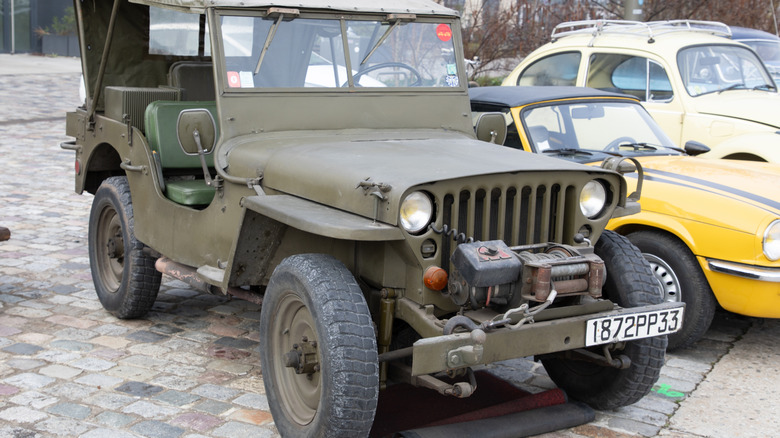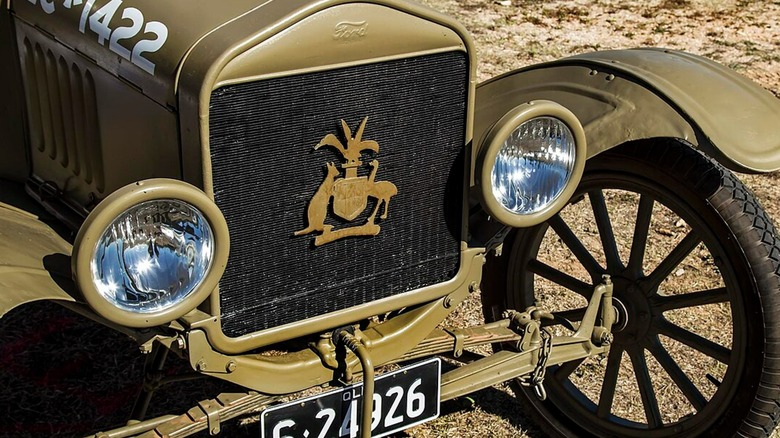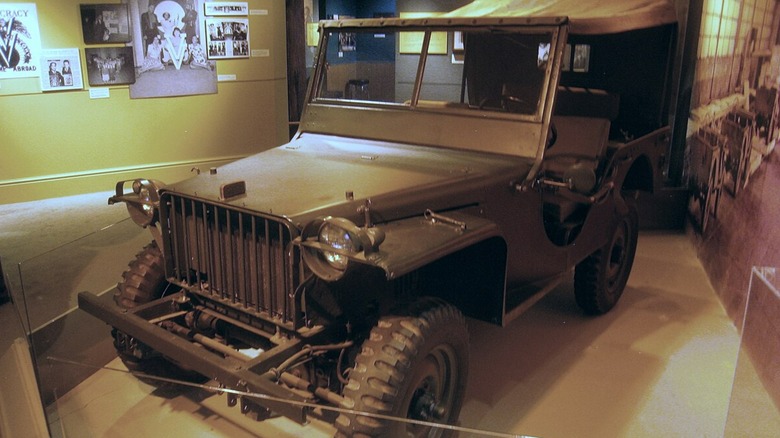What Off-Roaders Did The US Military Use Before The Advent Of The Jeep?
Throughout the decades, a few modes of military transportation have become the stuff of legend. In the United States in particular, the Jeep has become an enduring symbol of military travel. The Jeep is widely-regarded as America's greatest contribution to modern warfare, and for good reason. These off-road vehicles proved reliable, durable, and quick on the battlefield, making them perfect for moving soldiers and other key personnel from one point to another. With that said, as famous and synonymous as the U.S. military as the Jeep is, it's not quite the first of its kind. The armed forces employed other rugged rides before it came along.
The Jeep came to fruition in the 1940s during the Second World War, though it didn't mark the first use of military-grade off-road vehicles. The history of such rides goes back to the First World War, with GMC's Model 16 three-quarter-ton truck first making waves in 1916, renamed as the Class AA military truck. These vehicles were used primarily to move troops and serve as ambulances. Meanwhile, the GMC Model 23s were also put to use during the globe-spanning conflict. These were also utilized to move troops around, in addition to supporting planes during reconnaissance missions and lend a hand in artillery operations.
As GMC Model 16 and Model 23 trucks were put through their paces during World War I, other automakers contributed to the war effort. This innovation led to a civilian favorite becoming a wartime hero.
The Model T made it to the front lines before the Jeep
In October of 1908, the world witnessed history as the Ford Motor Company unveiled its first production car, the Model T — a name with an interesting history behind it. Designed with the intention to make cars more accessible to the average person, these rides were produced in the millions throughout their run at the start of the 20th century. It should be noted, though, that these vehicles aren't just notable for helping revolutionize civilian transportation. As it turns out, they more than left their mark on military history as well, contributing to the war effort during World War I.
Throughout the war, the United States and its military allies used the Model T to great effect. They served predominantly as ambulances, navigating war-torn roads and otherwise rough terrain with relative ease to rescue the wounded. In the event they wound up stuck while off-roading, they were light enough for a few soldiers to push them out. Not to mention, they were relatively inexpensive for the military, and they were user-friendly in terms of repairs. The U.S. Surgeon General's Office even provided input to the Ford Motor Company to help make the Model T even more effective at navigating the unpredictable battlefield.
All of these vehicles set the stage for a few different iterations to arise before the iconic Jeep known today became the standard.
Precursors to the iconic Jeep known today
In the wake of World War I, the military importance of off-road-capable modes of transportation became abundantly clear. Though the Model T, the Model 16, and others served the United States and others well, improvements could stand to be made. This was especially true as World War II heated up, prompting automakers to make great strides in off-road military vehicle technology. This eventually led to the creation of the iconic Jeep, but the design that became synonymous with the Second World War wasn't created overnight. Several models came along first that paved the way for its mass production.
World War II saw the creation of three main pre-production Jeep models: the American Bantam Mk II, Ford GP, and Willys MA. 1,500 of each were ordered by the United States Army, with sweeping revisions and improvements coming to all of them subsequently. Despite all of this, however, in time, the military elected to streamline its off-roading fleet, choosing the now-legendary Willy's Jeep as its sole model, largely thanks to its straight-four Go Devil engine. Going forward, Ford and Bantam design elements were added and to aid in reaching the military's production quotas, Ford took on some of the Jeep production during Willy's government contract period.
On the civilian front, some seriously powerful Jeep models have come and gone over the years. Still, none quite reached the cultural heights of those that served during World War II, which took the groundwork laid by previous military off-road vehicles and expanded on it tremendously.


